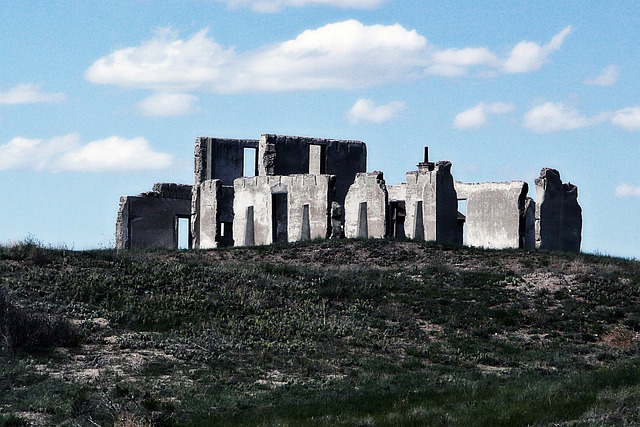
Fort Laramie National Historic Site in Wyoming is a treasure trove of American history, offering visitors a glimpse into the life of pioneers, soldiers, and Native Americans in the 19th century. As one of the most significant military posts on the Western frontier, Fort Laramie played a crucial role in the westward expansion of the United States. This detailed guide provides an in-depth look at the history, attractions, and visitor experiences at Fort Laramie National Historic Site.
Historical Background
Early Beginnings
Fort Laramie was originally established as Fort William in 1834 by fur traders William Sublette and Robert Campbell. Located at the confluence of the Laramie and North Platte Rivers, the fort was a crucial stop for trappers and traders in the region. It was later renamed Fort John and eventually became known as Fort Laramie.
Military Significance
In 1849, the United States Army purchased Fort Laramie to protect travelers on the Oregon, California, and Mormon Trails. The fort served as a key military post during the Indian Wars, providing a base for operations and a place of refuge for settlers.
Decline and Preservation
With the completion of the transcontinental railroad in 1869, the importance of Fort Laramie diminished, leading to its abandonment by the military in 1890. The site was preserved and designated as a National Historic Site in 1938, ensuring its historical legacy would be remembered.
Visiting Fort Laramie National Historic Site
Getting There
Fort Laramie National Historic Site is located in southeastern Wyoming, approximately 100 miles north of Cheyenne. The address is 965 Gray Rocks Road, Fort Laramie, WY 82212. Visitors can access the site via US Highway 26 or Wyoming Highway 160.
Visitor Center
The Visitor Center is the starting point for your visit to Fort Laramie. Here, you can find maps, brochures, and exhibits detailing the history of the fort. The knowledgeable staff can provide information on guided tours, special events, and educational programs.
Hours and Fees
The site is open year-round, with varying hours depending on the season. Admission to Fort Laramie National Historic Site is free, making it an accessible destination for all visitors.
Best Time to Visit
The best time to visit Fort Laramie is during the spring and summer months (April to September) when the weather is mild and most of the site’s attractions and activities are available. Fall and winter visits can also be enjoyable but may be limited due to weather conditions.
Exploring the Historic Site
Self-Guided Tours
Visitors can explore the site at their own pace with self-guided tours. Informational signs and brochures provide insights into the history and significance of each building and area.
Guided Tours
For a more immersive experience, consider joining a guided tour led by knowledgeable park rangers. These tours offer in-depth information about the fort’s history, architecture, and daily life.
Key Attractions
Old Bedlam
Old Bedlam is the oldest standing building in Wyoming, constructed in 1849. This two-story structure served as officers’ quarters and later as a headquarters. It has been restored to its 19th-century appearance and offers a glimpse into the living conditions of the time.
Commissary Storehouse
The Commissary Storehouse, built in 1857, was used to store supplies and provisions for the soldiers stationed at Fort Laramie. The building now houses exhibits on the daily life of soldiers and the fort’s logistical operations.
Barracks
The Enlisted Men’s Barracks, constructed in 1874, housed the soldiers who were stationed at Fort Laramie. Visitors can tour the restored barracks to see where soldiers lived, slept, and ate.
Sutler’s Store
The Sutler’s Store was a private enterprise that sold goods and services to soldiers and travelers. The restored store offers a fascinating look at the commercial aspect of life at the fort.
Infantry Barracks and Post Hospital
The Infantry Barracks and Post Hospital buildings have been restored and now feature exhibits on military medicine and the life of infantry soldiers. These buildings provide an understanding of the challenges faced by the military personnel stationed at Fort Laramie.
Fort Laramie Bridge
Built in 1875, the Fort Laramie Bridge is one of the oldest suspension bridges in Wyoming. It spans the North Platte River and offers scenic views of the surrounding landscape. The bridge is a testament to the engineering skills of the time and remains an iconic symbol of the fort.
Special Events and Programs
Living History Programs
Throughout the year, Fort Laramie hosts living history programs featuring reenactors who portray soldiers, settlers, and Native Americans. These programs provide a dynamic and engaging way to learn about the fort’s history.
Educational Programs
Fort Laramie offers educational programs for school groups, scouts, and other organizations. These programs are designed to teach participants about the fort’s history, the westward expansion, and the interactions between different cultures.
Annual Events
- Frontier Army Days: Held in June, this event features reenactments, demonstrations, and presentations about military life in the 19th century.
- Christmas on the Frontier: This December event celebrates the holiday season with period-appropriate decorations, music, and activities.
Nearby Attractions
Guernsey State Park
Located just 20 miles from Fort Laramie, Guernsey State Park offers outdoor recreational opportunities such as hiking, fishing, and camping. The park is also home to the Guernsey Museum, which features exhibits on the Civilian Conservation Corps and the park’s history.
Register Cliff
Register Cliff, located near Guernsey, is a historic site where pioneers on the Oregon Trail carved their names into the sandstone cliff. The site offers a fascinating glimpse into the lives of those who traveled westward in the 19th century.
Oregon Trail Ruts
Also near Guernsey, the Oregon Trail Ruts are deep grooves carved into the rock by the wheels of countless wagons. This site provides a tangible connection to the thousands of pioneers who journeyed along the Oregon Trail.
Practical Tips for Visiting
What to Bring
- Comfortable Walking Shoes: The site is spread out, and comfortable walking shoes are essential for exploring.
- Water and Snacks: While there are picnic areas, it’s a good idea to bring your own water and snacks.
- Sunscreen and Hat: The Wyoming sun can be intense, especially in the summer, so be sure to protect yourself from the sun.
- Camera: There are many photo opportunities throughout the site, so bring a camera to capture your visit.
Accessibility
Fort Laramie National Historic Site is committed to making the site accessible to all visitors. Many of the buildings and pathways are accessible, and the Visitor Center offers resources for visitors with disabilities.
Respect the Site
As a historic site, it’s important to respect the buildings and artifacts. Stay on designated paths, do not touch exhibits, and follow all posted rules and guidelines.
Conclusion
Fort Laramie National Historic Site offers a captivating journey through American history, providing a unique opportunity to explore the lives of those who lived, worked, and traveled through the fort in the 19th century. From its well-preserved buildings and informative exhibits to its engaging programs and scenic surroundings, Fort Laramie is a must-visit destination for history enthusiasts and curious travelers alike. Plan your visit to this iconic site and step back in time to experience the rich history and heritage of the American frontier.


